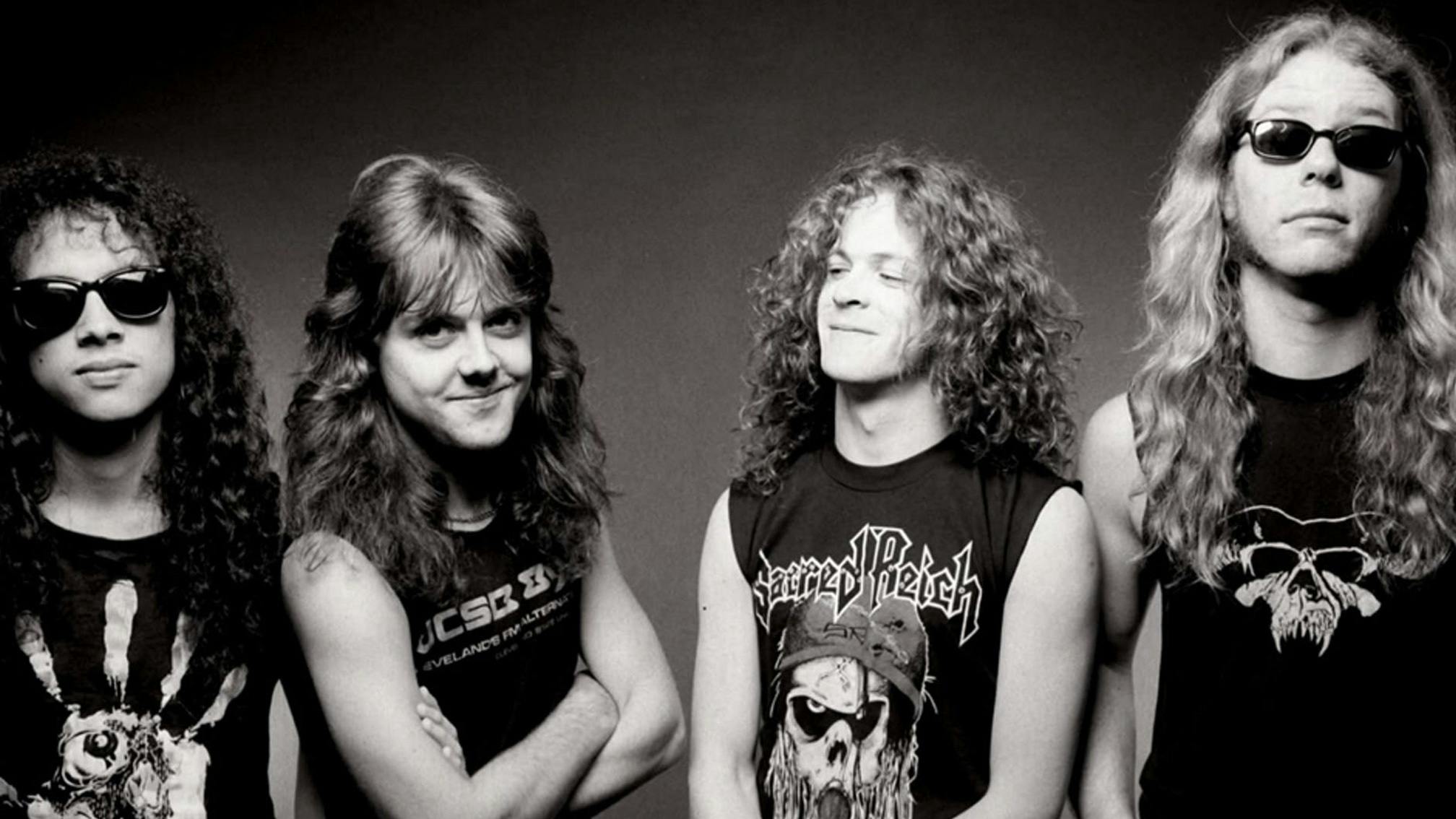September 5, 1988 saw the release of ...And Justice For All via Vertigo/Phonogram in the UK, and one day later on Elektra in the U.S.. The most immediately startling aspect of the album was the sterile, bone-dry production, with Jason Newsted’s bass, so up-front on the $5.98 E.P.: Garage Days Re-Revisited, mixed down to the point of being practically inaudible. Flemming Rasmussen was horrified, laying the blame at the doorstep of Steve Thompson and Michael Barbiero, who in turn pointed the finger squarely at Lars and James, particularly the drummer. For his part, Lars still maintains that the insult visited upon Jason Newsted was never malicious.
“It wasn’t [a case of] ‘Fuck this guy – let’s turn his bass down,’” he insisted. “It was more like, ‘We’re mixing, so let’s pat ourselves on the back and turn the rhythms and the drums up.’ But we basically kept turning everything else up until the bass disappeared.”
Whatever, no-one could deny that the album was uncompromising and another bold step forward for the band, taking the RTL/MOP template to the extreme. As predicted, ...Justice was an immediate success, debuting at Number 6 on the Billboard chart in the U.S. and at Number 4 in the UK.
“I can remember being pretty shocked when I was talking to a record company person after […Justice] was finished, right before it was released,” Kirk told Decibel magazine in 2011. “He was like – ‘Yeah man, it’s probably going to sell a million [copies] in the first couple of weeks.’ And I was like, ‘No way.’ I thought it was too heavy and too progressive and there was no way it would sell that much. But you know what? It sold more in those first two weeks than he even talked about. It was insane. All the right things happened at the right time. It was just our time, I guess.”
Now firmly in the spotlight, Metallica seized their moment. A decision was taken to permit film-makers Michael Salomon and Bill Pope to make a video for One, mixing a moody, stark performance of the song with footage from the 1971 film of Johnny Got His Gun. The result was a startling, often harrowing piece of art, with the song’s melodies mixed down in places to give prominence to the film’s storyline and dialogue.
“Pretty early on we felt we had something special on our hands,” Lars noted. “Whether it was great or shit, it meant something.”
The public clearly agreed: within weeks of its premiere on January 22, 1989, the video was the most popular clip on MTV. What could have been seen as a compromise by Metallica actually enhanced their reputation as artists with a singular vision and an unshakeable commitment to playing the game only by their own rules. This perception remained intact even when the Bay Area quartet accepted an invitation to perform at the 31st GRAMMY Awards ceremony one month later, on February 22. Even the most militantly anti-commercial Metallica fans seemed to recognise that, being nominated for the newly minted Best Hard Rock/Metal Performance (Vocal Or Instrumental) category for …And Justice For All, an opportunity to play the U.S. music industry’s most high profile event was too good an opportunity to shun.
Not that the band themselves didn’t have some initial concerns. “I thought, ‘Oh man, I don’t wanna be a part of this crap,’” James admitted. “But then it was, like, ‘Hey, this is an opportunity. You don’t get to do this every day, a chance to get on national TV and show all these boring fucks what we’re all about.’”
